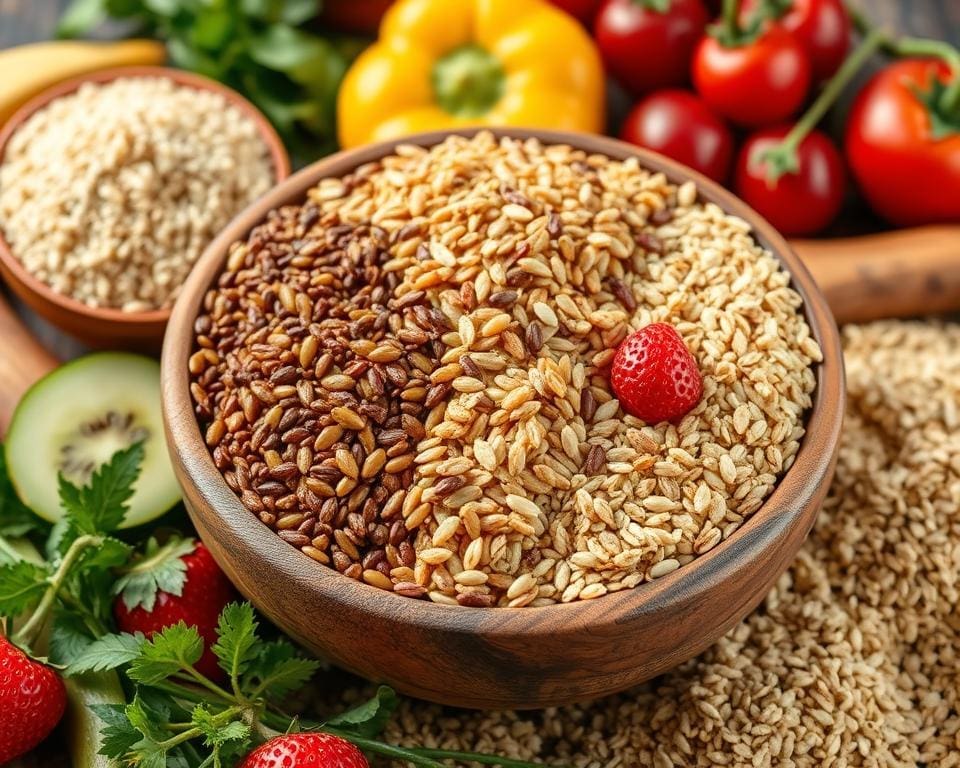In today’s fast-paced world, understanding the importance of whole grains in your diet is essential for promoting overall health and wellbeing. Shifting from refined grains to whole grain alternatives can significantly enhance your whole grain nutrition, providing vital nutrients and whole grain benefits that support improved heart health, digestive health, and effective weight management. Current dietary guidelines recommend incorporating a specific number of servings of whole grains daily, showcasing how easy it can be to include healthy whole grain options in your everyday meals. Join us on this journey as we explore practical tips and delicious recipes that will inspire you to nourish your body with the goodness of whole grains.
Understanding Whole Grains and Their Benefits
Whole grains are an essential part of a healthy diet, offering numerous benefits that support overall well-being. Understanding what are whole grains plays a crucial role in recognising their importance in nutrition and lifestyle choices.
What are Whole Grains?
Whole grains consist of three key parts of the grain kernel: the bran, germ, and endosperm. This unrefined nature means they retain vital nutrients that often get stripped away during the milling process. Unlike refined grains, whole grains maintain their natural fibre and essential nutrients, making them a valuable addition to any meal plan. Whole grain food choices like oats, brown rice, quinoa, and whole wheat bread deliver not just taste but also significant health benefits.
Whole Grain Benefits for Your Health
Including whole grains in your diet can lead to a myriad of health benefits. Studies indicate that they may reduce the risk of chronic diseases, such as type 2 diabetes, heart disease, and certain cancers. Whole grain benefits extend beyond disease prevention; they can aid in weight management and promote healthier digestion, largely due to their high fibre content. Emphasising whole grains can help you feel fuller for longer, supporting overall dietary balance.
Nutritional Value of Whole Grains
The nutritional value of whole grains is remarkable. Rich in dietary fibre, they play a vital role in digestion and linked to improved heart health. Whole grains are also packed with essential vitamins and minerals such as B vitamins, iron, magnesium, and antioxidants, which contribute to sustained energy levels and overall health enhancements. By opting for whole grain options, individuals can experience considerable improvements in their nutritional intake.

How to Incorporate More Whole Grains in Your Diet
Integrating whole grains into your meals can be both rewarding and enjoyable. With a few simple adjustments, you can easily enhance your diet by adding nutritious whole grains. Here are some practical strategies for incorporating these healthy options into your daily routine.
Easy Ways to Add Whole Grains to Your Meals
Transforming your meals starts with small changes. Consider swapping regular pasta for whole grain pasta. This simple switch offers a delightful texture and a nutritional boost. Another option includes substituting white rice with brown rice or quinoa, providing additional fibre and nutrients. By adding more whole grains to meals, you enhance both flavour and health benefits.
Healthy Whole Grain Options to Try
A variety of healthy whole grain options await your discovery. Quinoa, with its unique nutty flavour and high protein content, makes a fantastic base for salads and bowls. Barley adds a chewy texture to soups and stews, while farro, known for its rich taste, complements roasted vegetables wonderfully. Each of these grains brings something special to the table and can be easily incorporated into your diet.
Whole Grain Cooking Tips for Beginners
Getting started with whole grain cooking can feel daunting. Begin by learning the basic cooking methods for different grains. Rinse them properly before cooking to remove any impurities. Follow the package instructions for water-to-grain ratios to ensure the perfect texture. For meal prep, store cooked whole grains in airtight containers in the fridge, allowing for quick additions to meals throughout the week. Embrace these whole grain cooking tips to simplify your preparation and enjoy a variety of nutritious dishes.
Delicious Whole Grain Recipes to Get You Started
Incorporating whole grains into your diet can be both delightful and nutritious. Below are some recipe ideas designed to inspire creativity in your cooking while ensuring you enjoy the health benefits of whole grains. Whether you’re starting your day with a wholesome breakfast or looking for satisfying lunch and dinner options, these recipes will make your meal times more enjoyable.
Breakfast Ideas Featuring Whole Grains
Begin your day with nourishing breakfast ideas featuring whole grains, such as creamy oatmeal topped with fresh fruits and nuts or fluffy whole grain pancakes that everyone will love. For a refreshing twist, try a smoothie made with quinoa, which adds a complete protein source to your morning routine. These breakfast options not only provide energy but also keep you full until lunchtime.
Wholesome Whole Grain Lunch and Dinner Recipes
For lunch and dinner, opt for wholesome whole grain recipes like vibrant quinoa salads packed with seasonal vegetables or hearty brown rice bowls topped with grilled chicken and a drizzle of tahini. Wraps made with whole grain tortillas filled with roasted vegetables and hummus are another satisfying choice. These meals are balanced, flavourful, and perfect for any time of the year.
Easy Whole Grain Snacks for Any Time
Snacking healthily is simple with easy whole grain snacks. Consider making your own granola bars using oats, nuts, and dried fruits for a quick energy boost. Alternatively, popcorn prepared from whole grains provides a satisfying crunch that is perfect for movie nights or afternoon cravings. These snack ideas not only fulfil your hunger but also keep you aligned with your whole grain goals.









